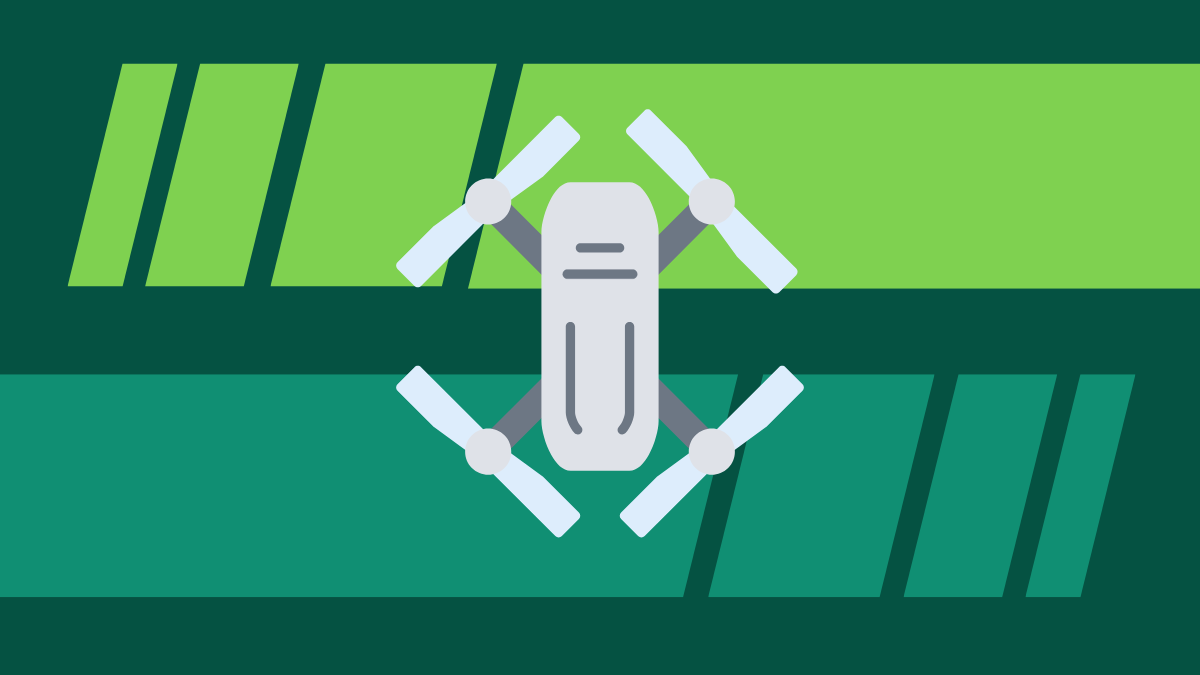If AI Can Code, Why Should Students Learn Computer Science?
CS is so much more than syntax or writing loops. Here are six reasons to keep CS in the educational conversation right now + how CS prepares students for an AI-powered workforce.


Picture this: a group of students huddle over a hand-held drone, racing to repair a broken rotor before a match kicks off. Inside the arena, more drones zip and dive as opposing teams strategize, eager to fly their striker through their opponent’s hoop. Suddenly, there’s a breakthrough. One drone flies out ahead, everyone holds their breath, and…goaaaaaal!
This isn’t a scene from a new video game; you’re watching drone soccer, a high-energy game where tech meets teamwork. And if you ask teachers who are bringing it into schools, it isn’t just fun; it’s also revolutionizing how students engage in STEM learning.
Drone soccer takes everything kids love about gaming, robotics, and competition, and transforms it into a full-blown sport. And the kicker: this up-and-coming activity fosters serious social skills and STEM career prep students need to thrive.
No need to grab your cleats. Here’s how drone soccer takes learning to new heights — and how one Illinois team is already taking part in national competition.
A standard physics lecture can’t catch every student’s attention. Without some action, students’ eyes glaze over, their minds wondering while they question why they need to learn about acceleration and velocity in the first place.
Enter: drone soccer. It’s hands-on, messy, and packed with real-world applications. Instead of just talking about aerodynamics, students feel it every time their drone catches a gust mid-flight. It’s learning in action, and that’s sure to snag students’ eyes and ears.

In drone soccer, students don’t just fly the drones; they also build, program, and repair their craft. When a drone crashes (don’t worry, that’s normal!), students are encouraged to troubleshoot using their resources and experience.
Depending on the issue, students may need to dig into electronics, coding, and basic engineering principles to get their craft back in the game. It’s experiential learning at its finest—fail, fix, learn, repeat.
The job market is heating up for drone operators, engineers, and aerospace pros. Through drone soccer, students get their hands on professional-grade technology early, giving them a leg up on any of these in-demand career paths.
For those ready to level up, drone soccer can also help students earn an FAA Part 107 Remote Pilot license. An industry-recognized certification like that is an immediate green flag for future employers, not to mention a rewarding goal for students to strive for.
TL;DR: this sport is about more than flying drones—it’s about giving students a head start in engineering fields that can take them far.
Success in regular soccer requires more than athleticism. In much the same way, successful drone soccer players need more than technical skills to come out on top.
In this sport, teamwork and strategy are just as important as piloting skills. Even outside the heat of a match, drone soccer teams thrive when they communicate well — a soft skill students can effectively translate back into academic and interpersonal success.

It’s not just the star pilot who shines—every drone soccer team needs mechanics, strategists, and communicators working side-by-side to succeed. Whether they prefer to fly or fix, this activity is a playground where students with different strengths can shine.
When a drone malfunctions mid-match, drone soccer players don’t have time to panic. As a team, they have one goal – fix it, and fix it fast. This kind of real-time problem-solving teaches students how to stay cool under pressure, a skill that’ll serve them well both on the job and in their personal life.
Here’s where drone soccer really breaks the mold: it welcomes everyone. This activity isn’t just for athletes or tech wizards. It’s a place where students of all genders and backgrounds can find their niche and apply it as part of a diverse team.
In districts already running programs, educators are seeing students come alive—especially those who didn’t click with conventional sports. Some students who were disengaged elsewhere are suddenly thriving on the drone soccer team. It’s proof that this sport offers a rare sense of belonging that can benefit any school community.
Physical size and athleticism also don’t have a bearing on a student’s ability to participate in drone soccer, making it a real game-changer for inclusivity in school-sponsored activities.

For schools in search of future-ready programs, drone soccer checks every box. It blends hands-on STEM learning with social and emotional skills, fosters teamwork, and offers practical career prep. Not only that, but it’s also competitive, inclusive, and—most importantly—fun.
The best part? Your school doesn’t have to reinvent the wheel to get started. Drone soccer programs are already spreading, with over 240 schools across 28 states joining the movement.
Here in Illinois, Dixon Public Schools is already modeling drone soccer’s potential, with a program that’s breaking new ground and getting students invested in hands-on STEM learning. In just over a year, their program has even put itself on the national map, with their middle and high school team traveling to the U.S. Drone Soccer National Championship last April.
At IETC 2024, Dixon’s coaches highlighted how drone-based activities like these are transforming student engagement by combining hands-on learning with competitive teamwork. During a special showcase, educators got a chance to try piloting a purpose-made drone for themselves—an experience many were eager to bring back to their students.
Drone soccer isn’t just a novelty—it’s a serious curricular activity. It offers students a chance to engage with technology in ways that are meaningful and exciting. And it doesn’t stop at technical skills. From drone soccer, students walk away with teamwork, communication, and problem-solving skills they can lean on for life.
In short, drone soccer isn’t just an excuse to play with drones. It’s an opportunity to learn, one your students will be eager to take part in.
Get your school in the game now because the future is taking off, and your students deserve to be in the cockpit.

Tim directs the Learning Technology Center, providing strategic leadership, expertise, and operational management for statewide technology and digital learning initiatives.

Sam leads and supports the execution and growth of LTC services through the development and creation of innovative, impactful, and timely digital content.